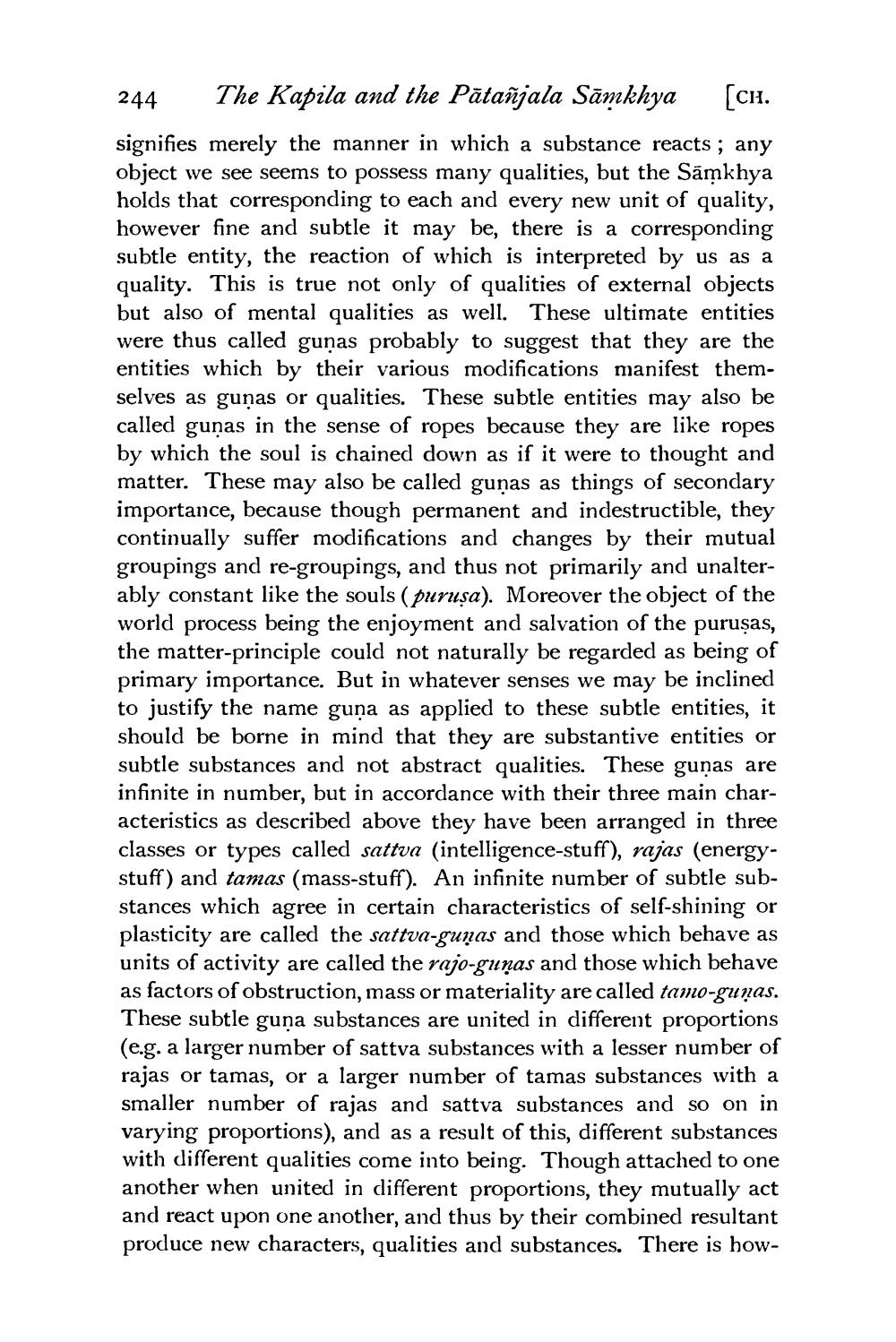________________
244
The Kapila and the Pătañjala Sāmkhya
[CH.
signifies merely the manner in which a substance reacts; any object we see seems to possess many qualities, but the Samkhya holds that corresponding to each and every new unit of quality, however fine and subtle it may be, there is a corresponding subtle entity, the reaction of which is interpreted by us as a quality. This is true not only of qualities of external objects but also of mental qualities as well. These ultimate entities were thus called gunas probably to suggest that they are the entities which by their various modifications manifest themselves as guņas or qualities. These subtle entities may also be called gunas in the sense of ropes because they are like ropes by which the soul is chained down as if it were to thought and matter. These may also be called guņas as things of secondary importance, because though permanent and indestructible, they continually suffer modifications and changes by their mutual groupings and re-groupings, and thus not primarily and unalterably constant like the souls ( purusa). Moreover the object of the world process being the enjoyment and salvation of the purusas, the matter-principle could not naturally be regarded as being of primary importance. But in whatever senses we may be inclined to justify the name guna as applied to these subtle entities, it should be borne in mind that they are substantive entities or subtle substances and not abstract qualities. These guņas are infinite in number, but in accordance with their three main characteristics as described above they have been arranged in three classes or types called sattva (intelligence-stuff), rajas (energystuff) and tamas (mass-stuff). An infinite number of subtle substances which agree in certain characteristics of self-shining or plasticity are called the sattva-guņas and those which behave as units of activity are called the rajo-gunas and those which behave as factors of obstruction, mass or materiality are called tamo-guņas. These subtle guna substances are united in different proportions (e.g. a larger number of sattva substances with a lesser number of rajas or tamas, or a larger number of tamas substances with a smaller number of rajas and sattva substances and so on in varying proportions), and as a result of this, different substances with different qualities come into being. Though attached to one another when united in different proportions, they mutually act and react upon one another, and thus by their combined resultant produce new characters, qualities and substances. There is how




